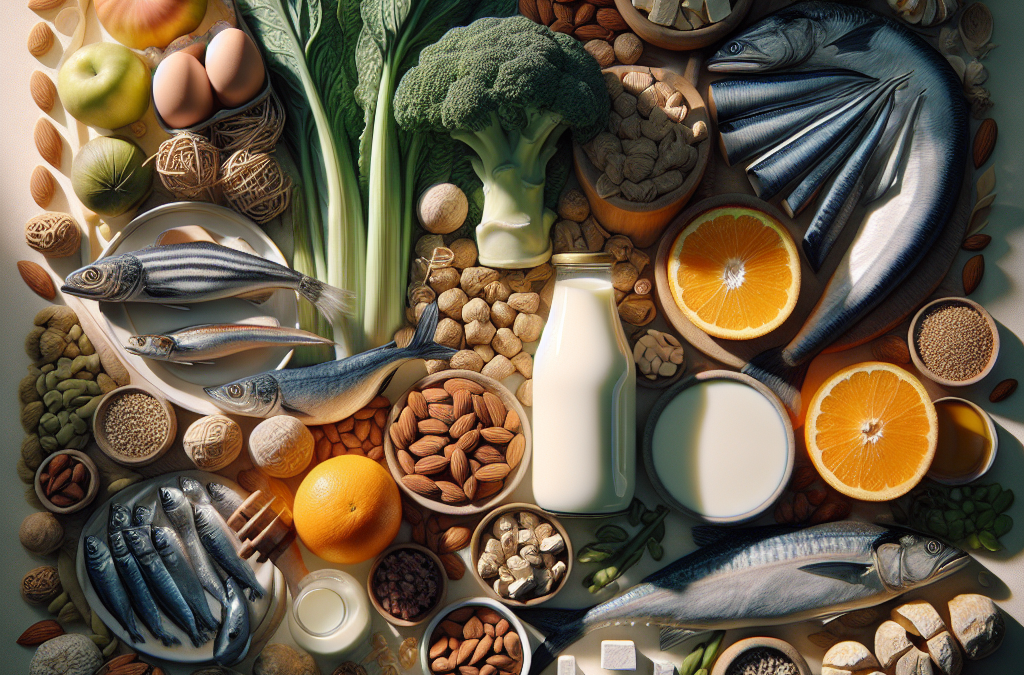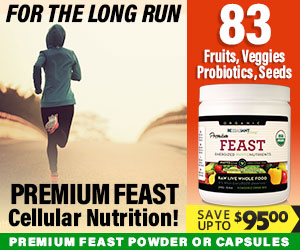Leafy Greens
Why Leafy Greens Matter
When I first dove into the world of nutrition, I was blown away by how essential leafy greens are for bone health. These vibrant veggies like kale, collard greens, and spinach pack a punch with vital nutrients, particularly vitamin K. This vitamin plays a crucial role in calcium absorption, making those greens a real powerhouse for your bones.
Besides vitamin K, leafy greens also provide magnesium and calcium, both of which are fundamental for bone structure and strength. I’ve learned that including a good serving of greens in my daily meals not only boosts my overall health but also supports my skeletal system in the long run.
So, the next time you’re making a salad or a smoothie, don’t skimp on the leafy greens. They’re not just for show; they’re your bones’ best friends!
How to Incorporate Leafy Greens in Your Diet
Getting enough leafy greens in your diet is easier than you might think! I often start my day with a green smoothie that includes spinach or kale, toss them in salads for lunch, and even sneak them into pasta sauces for dinner. Trust me; you won’t even notice them once they’re mixed in.
Another fantastic option is to sauté greens with garlic and olive oil as a side dish. This simple preparation adds flavor and makes those greens much more appetizing. Plus, who doesn’t love a little garlic?
If you’re feeling adventurous, you can also try blending greens into pesto or soups. The possibilities are endless, and your bones will thank you for it!
Buying Tips for Leafy Greens
When shopping for greens, I recommend going for organic whenever possible. This helps ensure you’re avoiding pesticides and other chemicals that can be harmful to your health. Look for vibrant leaves; dull or wilted greens can indicate they’re not fresh.
Don’t forget to check the bottom of the bunch! Sometimes the stems aren’t as fresh as they should be and can lead to a less-than-great experience when you cook with them. I’ve made it a habit to buy my greens from local farmers’ markets, ensuring I get the freshest options available.
Lastly, always read up on what’s in season. Eating with the seasonal produce means you’ll get the best flavor and nutrients out of your leafy greens, which translates to better health for your bones!
Fatty Fish
The Benefits of Omega-3 Fatty Acids
Personally, whenever I think about foods that can help my bones, fatty fish immediately come to mind. Salmon, mackerel, and sardines are not just delicious; they are rich in omega-3 fatty acids. These guys are known for reducing inflammation, which can be a major player in bone and joint issues.
What amazed me was how omega-3s help in improving bone density. For anyone concerned about osteoporosis, incorporating these fish regularly into meals is such a smart move. It almost feels like giving your bones a nice, nourishing hug!
Plus, fatty fish is full of vitamin D, which is essential in calcium absorption. Since battling with low vitamin D levels can be a challenge for many, finding delicious ways to consume more fatty fish makes a world of difference.
Ways to Enjoy Fatty Fish
For me, the easiest way to enjoy fatty fish is grilled or baked with a sprinkle of herbs and lemon. Simple, yet so effective! I’ve also been known to whip up a mean salmon salad with avocado and mixed greens; it’s a powerhouse meal that feels indulgent but is super healthy.
If you’re not a fan of fish, there are supplements available, but I always opt for the real deal whenever possible. Freshness is key, and the flavor of cooked fish is unmatched.
Trying out different preparations can also help. I’ve experimented with various marinades and seasoning blends, making each meal unique while still getting those amazing omega-3s.
Purchasing Tips for Fatty Fish
When you hit the fish market, I recommend looking for wild-caught options over farmed fish. Wild-caught tends to be more nutrient-dense and much tastier. Be on the lookout for fish that smells fresh and not overly ‘fishy’—that’s often a good sign of quality.
Frozen fatty fish can be just as good, if not better, than some fresh options, as they are usually frozen shortly after being caught, which helps lock in the nutrients. Always check the packaging for sourcing information.
And here’s a little tip: try to buy fish during weekdays for a better selection. Markets can get crowded on weekends, and the lines can be long, but during the week, you might find better quality and fresher options!
Nuts and Seeds
The Power of Nutrients
Nuts and seeds have become my go-to snacks and delightful additions to meals. Almonds, walnuts, chia seeds, and flaxseeds are packed with essential nutrients like calcium, magnesium, and phosphorus—key players in bone health. It’s incredible how something so small can offer such a robust array of health benefits!
What’s particularly fascinating is that these tiny foods also contain healthy fats and protein. This combination makes them an ideal choice for not just bone strength but overall health. Ever since I discovered how nutrient-dense these little guys are, I’ve been adding them wherever I can.
From tossing a handful of nuts into breakfast oatmeal to sprinkling seeds over salads, the versatility of nuts and seeds is endless. They make it easy to boost nutrient intake without much effort!
Incorporating Nuts and Seeds into Your Meals
Adding nuts and seeds to your diet can be as easy as grabbing a handful for a quick snack. I often keep a jar of mixed nuts on hand for a healthy work-from-home snack. They help curb my cravings while providing a nice crunch!
Another way I enjoy them is by blending seeds like flax or chia into smoothies. These seeds can absorb liquid, giving smoothies a thick, creamy texture while boosting fiber and omega-3 intake.
Don’t forget about baking, too! I love adding nuts to muffins or breads for that extra crunch and flavor. It’s a fun way to make everyday recipes not just healthier but also more interesting.
Choosing Quality Nuts and Seeds
When picking out nuts and seeds, I always opt for raw or dry-roasted without added sugars or salts. Organic versions can be a bit pricier, but they are often fresher and free from harmful additives. It’s all about finding a balance that works for you!
If you can, buy in bulk. It saves money and makes it easy to stock up on your favorites without breaking the bank. Just be sure to store them properly to avoid spoilage—they don’t last forever, especially if they with oil.
Get an Amazing Discount on the Best Certified Organic Whole Food Supplement!
Finally, don’t hesitate to experiment with different varieties. Every nut or seed has its unique flavor, and trying out various options might lead you to discover a new favorite!
Fruits and Vegetables
Rich in Vitamins and Minerals
How can we talk about bone health without mentioning fruits and vegetables? Personally, I’m a huge fan because they are not just colorful but also full of vitamins C, A, and K. These vitamins support collagen synthesis, which is essential for strong bones. Eating a rainbow is more than just a mantra; it’s a recipe for health!
Citrus fruits, in particular, are fantastic for vitamin C, while carrots and sweet potatoes deliver a hefty dose of vitamin A. You really can’t go wrong by having a diverse vegetable and fruit intake. It just makes everything taste better, too!
Not only are fruits and veggies great for bone health, but they also help with hydration and provide fabulous fiber, which helps keep everything running smoothly in the body. I’ve noticed my energy levels go up when I fill my plate with colorful, whole foods.
How to Get More Fruits and Vegetables in Your Diet
In my everyday life, I make it a priority to snack on fruits and veggies. Carrot sticks and hummus or apple slices with almond butter? Yes, please! They keep my cravings in check and add nutritional value to my day. Prepping snacks in advance has been a game-changer for me.
Incorporating more fruits and veggies into meals is also easy! I toss kale into stir-fries, add berries to my morning yogurt, or mix different colored bell peppers into my salads. Sometimes I challenge myself to try one new fruit or vegetable each week to keep things fresh and exciting.
It’s all about making it a fun journey rather than a chore. The more you explore different preparation methods, the more likely you’ll find favorites that are totally delicious!
Finding Quality Fruits and Vegetables
When shopping for produce, I always check for freshness. Organic options can sometimes have more flavor, but if they’re out of budget, just wash conventional fruits and veggies thoroughly. Farmers’ markets are gold mines for seasonal, fresh produce. Plus, supporting local farmers is a bonus!
Buying in-season produce not only tastes better but can also save you money. I always try to plan meals around what’s currently available to ensure I’m getting the best flavors—and let’s not forget the nutritional benefits!
Also, try to grow a small herb garden or a few veggies at home if possible. Even if it’s a window box with herbs, watching them grow adds a special touch to my cooking. Plus, there’s nothing like the taste of homegrown herb-infused dishes!
Dairy Alternatives
Benefits for Bone Health
As someone who has challenged traditional dairy consumption, I’ve found dairy alternatives like almond milk, soy yogurt, and coconut-based products to be fantastic for bone health. Many brands now fortify their alternatives with calcium and vitamin D, which is a big plus for those who might be lactose intolerant or simply choose not to consume dairy.
The great thing about these alternatives is that they can be just as creamy and delicious as their dairy counterparts. I’ve been able to enjoy smoothies, pancakes, and more without feeling bloated—how awesome is that?
Many dairy alternatives are also lower in calories, making them an ideal choice for those looking to maintain a healthy weight while still focusing on bone health. It’s like having your cake and eating it too!
How to Use Dairy Alternatives in Your Diet
Substituting regular dairy with alternatives is surprisingly simple! I often use almond milk in my smoothies or oatmeal, and I’ve found that it blends beautifully. Trying coconut yogurt with fresh fruits has become my breakfast staple, adding a tropical twist to my mornings!
Using dairy alternatives in baking can be just as easy. I’ve enjoyed making creamy sauces with cashew cream as a substitute, giving a rich flavor without the dairy. The versatility is awesome.
If you’re a coffee lover like me, experimenting with different dairy alternatives for lattes and cappuccinos can be a delicious adventure! I’ve found that oat milk froths exceptionally well, making my morning coffee ritual feel a bit special.
Finding Quality Dairy Alternatives
When searching for dairy alternatives, I recommend looking for options that have added calcium and vitamin D. Always give the ingredient list a quick read; the shorter, the better typically means fewer additives.
If you’re crafting a choice for taste consistency, it might take a couple of tries to find the one you love. I’ve gone through several brands before I found one that suited my taste buds in both texture and flavor.
And don’t forget to check the expiration dates! Since many dairy alternatives have shorter shelf lives than regular dairy products, make sure to grab ones that will last, especially if you’re stockpiling.
Conclusion
In conclusion, taking care of our bones doesn’t have to be a daunting task. By incorporating these fantastic whole foods into our diets, we’re not only strengthening our bones but also enjoying delicious meals along the way! From vibrant leafy greens to scrumptious fatty fish and crunchy nuts, there’s a whole world of nutrition waiting for you.
So my friends, let’s make each meal a celebration of health and nutrition. Just remember, small changes lead to significant results. Happy eating!
FAQs
1. What are whole foods, and why are they important for bone health?
Whole foods are foods that are minimally processed and are close to their natural state, such as fruits, vegetables, whole grains, nuts, and seeds. They are important for bone health because they are rich in essential nutrients like calcium, magnesium, and vitamins that support bone strength.
2. How can I ensure I’m getting enough calcium if I’m lactose intolerant?
If you’re lactose intolerant, you can get calcium from various sources, including fortified plant-based milk, leafy greens, nuts, seeds, and certain fish like sardines or salmon. Always check labels for calcium content and consider supplements if necessary.
3. How often should I eat foods that are rich in omega-3 fatty acids?
It’s recommended to consume foods rich in omega-3 fatty acids, like fatty fish, at least twice a week. However, you can also include plant-based sources like flaxseeds and walnuts regularly as part of your diet for overall health.
4. Can I get sufficient protein from plant-based sources for bone health?
Absolutely! Plant-based protein sources such as beans, lentils, quinoa, nuts, and seeds can provide adequate protein for bone health. Balancing a variety of these sources throughout your meals is key.
5. Is exercise important for maintaining bone health along with diet?
Yes, absolutely! Regular weight-bearing and resistance exercises help strengthen bones and enhance overall bone health. Pairing a nutrient-rich diet with regular physical activity creates the perfect recipe for strong bones.




